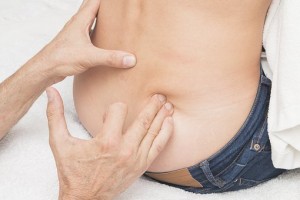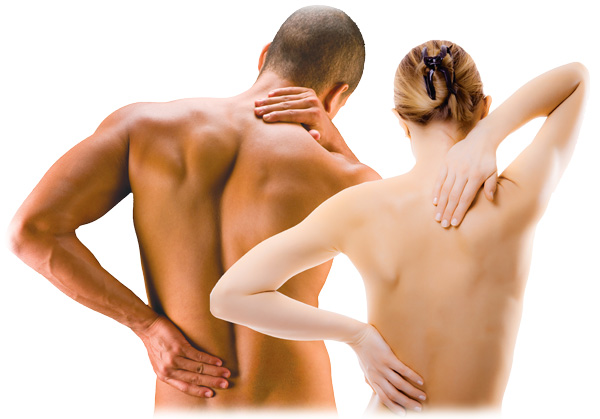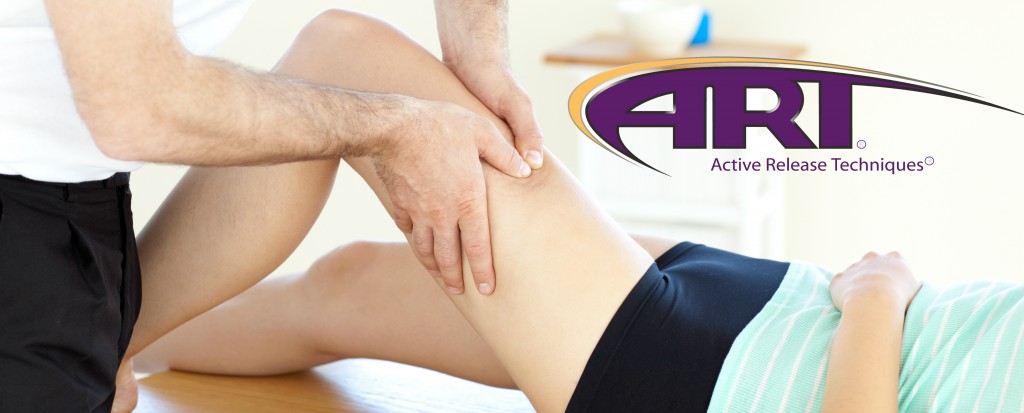Resolving Back Pain with Active Release Techniques®
If you experience back pain you are not alone. Back pain is one of the most common and costly health problems in our culture. Anyone who has experienced a bad back knows it can be extremely frustrating and often debilitating. Many back problems appear to be initiated by only minor, seemingly routine activities, or in many cases have no clear cause at all. Once present, back pain often interferes with our work, and prevents us from enjoying our favorite things, such as walking, playing golf, exercising, or gardening. There are many instances where back pain can even interfere with a good nights sleep. To make matters worse many common back conditions are slow to respond to traditional types of care, often providing only temporary relief with the same problem re-occurring over and over again.
Now for the good news, a treatment technique known as Active Release Techniques® (ART®) is a very effective method to treat many common back problems and is helping to get back pain sufferers doing their favorite activities again. But before we talk about how ART® works so effectively, first we first need to understand how the back becomes injured in the first place.
Understanding Back Pain
When talking about the back, we are actually talking about the spinal column, which consists of a series of small bones called “vertebrae” stacked on top of each other. Each of these bones is connected to one another through a series of joints. The first is the intervertebral joint, which is formed when two vertebrae are joined together by an intervertebral disc. The second and third joints are known as facet joints. These joints are located on the back of the spine and consist of the small, bony processes that extend back from the vertebral bodies.  These joints between protect the area from injury. These muscles are arranged in several layers. The deepest layers consist of very small muscles that attach into each individual vertebrae and control and protect each individual joint. The middle layers span across several joints, and the outer layer consists of the larger, more powerful muscles that run the entire length of the spine, all the way from bottom to top. This complex muscle system essentially acts as a series of guy wires that move and stabilize each vertebrae and prevent excessive motion and buckling of the spine. When each muscle group is adequately strong, flexible, and coordinated the back remains protected and healthy.
These joints between protect the area from injury. These muscles are arranged in several layers. The deepest layers consist of very small muscles that attach into each individual vertebrae and control and protect each individual joint. The middle layers span across several joints, and the outer layer consists of the larger, more powerful muscles that run the entire length of the spine, all the way from bottom to top. This complex muscle system essentially acts as a series of guy wires that move and stabilize each vertebrae and prevent excessive motion and buckling of the spine. When each muscle group is adequately strong, flexible, and coordinated the back remains protected and healthy.
Back Pain and the Kinetic Chain Relationship
When discussing any type of back problem we also need to review the relationship that the back has with the other joints in the body, particularly the hip. Recall that the spine is designed to be flexible, but that excessive movement will lead to problems. The hip on the other hand is designed to provide a tremendous amount of movement. Unfortunately, it is extremely common for the hip to be tight and restricted. When this occurs it often will require the spine to move more than normal in an effort to compensate for the lack of motion at the hip. Excessive spine movement will result in low back pain, but as you can see, the problem at the hip is the underlying cause.
A common example of how the back is influenced by the hip occurs with walking. During a walking stride the hip must extend backwards as the upper body passes over the support leg. If the hip is restricted and does not extend properly, the back will have to extend excessively to compensate. This will in turn lead to a “jamming” of the facet joints on the back of the spine and lead to pain. In this instance treatment directed at the back will be needed, but for full resolution the problem at the hip will also require correction to reach a lasting solution.
How Can These Back Injuries Be Fixed?
Active Release Techniques® Our Approach: ART® – A Better Solution
ART stands for Active Release Techniques. It is a new and highly successful hands-on treatment method to address problems in the soft tissues of the body, including the muscles, ligaments, fascia, and nerves. ART treatment is highly successful in dealing with pain and injuries because it is specifically designed to locate and treat scar tissue adhesions that accumulate in the muscles and surrounding soft tissues. By locating and treating the soft-tissue adhesions with ART, it allows the practitioner to, 1) break-up restrictive adhesions, 2) reinstate normal tissue flexibility and movement, and 3) more completely restore flexibility, balance, and stability to the injured area and to the entire kinetic chain.
You can think of an ART treatment as a type of active massage. The practitioner will first shorten the muscle, tendon, or ligament, and then apply a very specific pressure with their hands as you actively stretch and lengthen the tissues. As the tissue lengthens the practitioner is able to assess the texture and tension of the muscle to determine if the tissue is healthy or contains scar tissue that needs further treatment. When scar tissue adhesions are felt the amount and direction of tension can be modified to treat the problematic area. In this sense, each treatment is also an assessment of the health of the area as we are able to feel specifically where the problem is occurring.
An additional benefit of ART is it allows us to further assess and correct problems not only at the site of pain itself, but also in other areas of the kinetic chain, which are associated with movement compensations and are often contributing factors to the problem. This ensures that all the soft tissues that have become dysfunctional and are contributing to the specific injury are addressed, even if they have not yet all developed pain. One of the best things about ART is how fast it can get results. In our experience, the majority of pain and injuries respond very well to ART treatment, especially when combined with the appropriate home stretching and strengthening exercises. Although each case is unique and there are several factors that will determine the length of time required to fully resolve each condition, we usually find a significant improvement can be gained in just 4 – 6 treatments. These results are the main reason that many elite athletes and professional sports teams have ART practitioners on staff, and why ART is an integral part of the Ironman triathlon series.
To book an appointment to see if ART will be able to help with your pain and/or injury, simply call our office at 613.237.3306 or fax 613.237.3100.



